In 2007, the Sigma shape was still an odd man out among the existing types of kites. Not so much because it is one Supported Leading Edge (SLE) kite is only more because of the non-conventional shape of the kite. This year, the Sigma shape is indispensable. You have probably seen these kites, informed or perhaps you even kitesurf with them.
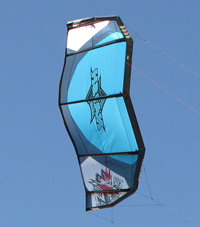
The Sigma shape is now entering its second year and is designed by the kiteboard manufacturer Naish kiteboarding. The objectives that Naish has with these kites can be clustered in three main objectives that are detailed below.
Rotation speed
The Sigma shape must increase the rotational speed. The image shows that the Sigma shape kite is directly controlled over 50% of the kite with steering corrections. With a conventional kite, Naish assumes that direct control at 30% is at the 'tips' of the kite. This 30% must get the other 70% of the kite, this causes a delay.
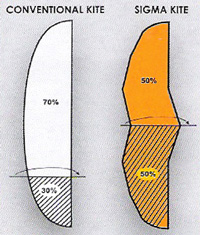
Bar pressure and position of the kite when depowering
The Sigma shape must reduce the bar pressure, provide the kiteboarder with a constant pressure and the kite must not suddenly gain enormous speed when depowering. In the image you can see that the round in the sigma kite remains at the same point, even with extreme depower. This ensures that the kite remains in place even with extreme depower and does not suddenly shoot forward. As a result, the bar pressure must also remain fairly constant.
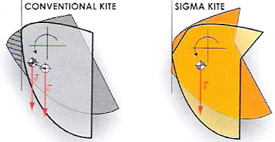
Water start
The Sigma shape should make water starting a lot easier because the kite, once it is on the water, only has contact with the water at two points. The leading edge no longer sticks to the water over the entire width, but has two tilting points on the sides of the kite. This makes a Sigma shape kite easily overturn.
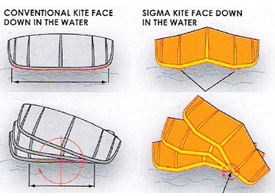
Reactions and practical experiences are welcome.



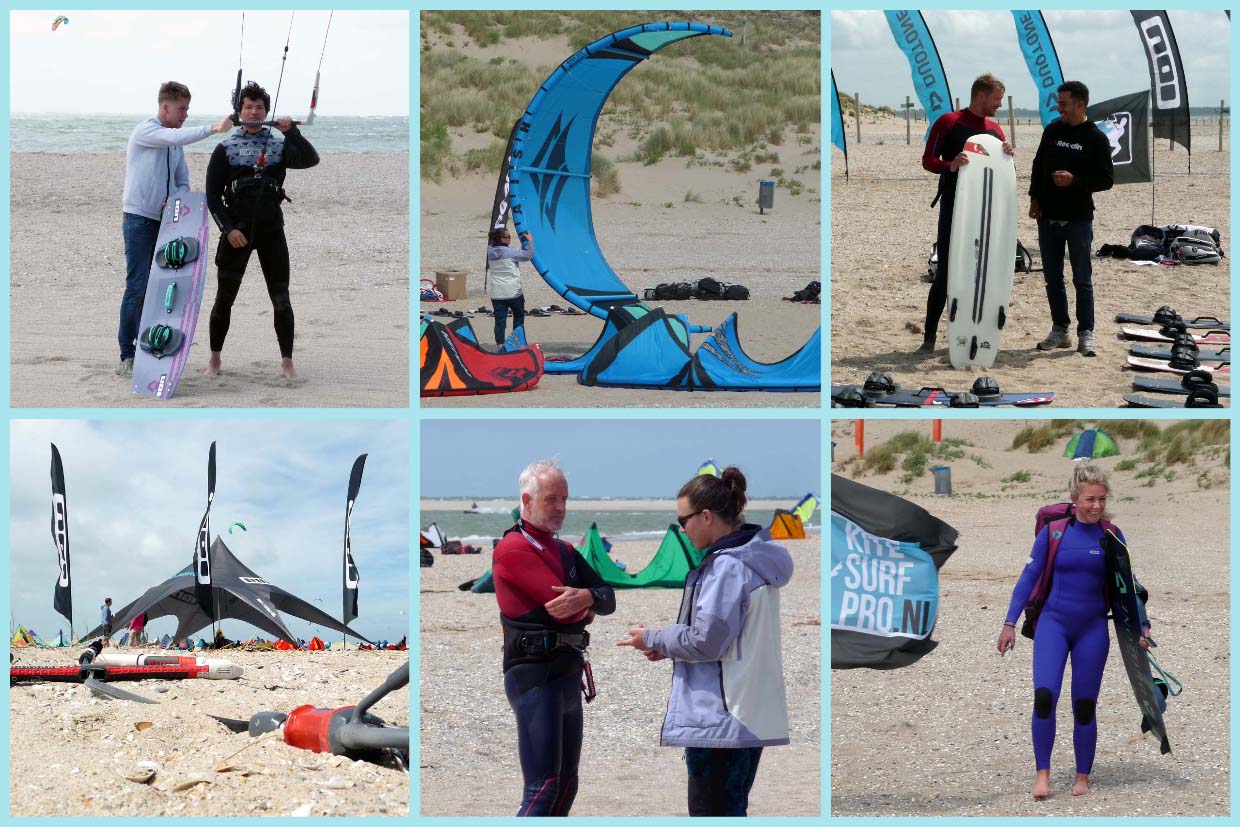
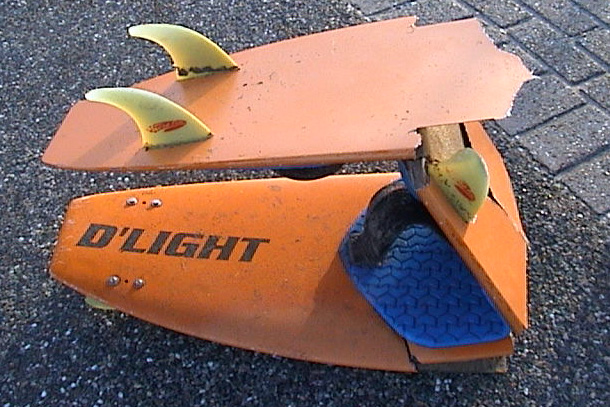

Alliance is not SLE but a C-shape 5-line Sigmadesign. So compare apples with pears a bit if you make the comparison with an OR SLE. I have sailed with the OR and the feeling on the bar cannot be compared with the constant feeling of the Sigma SLEs. Restarting with the Alliance is therefore not the same as SLE's but as an old-fashioned C-shape.
I sailed waroos in 2007 and occasionally got to enjoy the Alliance of a friend of mine. Turning speed is indeed top, but in my new SLE from Ocean Rodeo that is at least equaled, and that is not a sigma shape either. If that were your reason to choose, it can be worthwhile to test it further, so in my opinion. Incidentally, this is not an argument for Ocean Rodeo; although the kites sail wonderfully, they also have plenty of disadvantages.
Also striking that not all Sigma kites restart properly; the Helix and Cult don't seem to have any problem with it, but once that friend of mine's Alliance was in the water, only swimming back was an option… Weird.
Well …… I have been sailing Sigma's for 2 years now and I also have a Waroo (with cambattens) in my quiver.
The most striking of the Sigmashape in terms of feeling in the sailing behavior compared to other SLEs, is the constant feeling on the bar regarding steering forces and bar pressure over the entire range of the kite. Most SLEs still feel more on / off in the upper range, and the steering feels a bit more spongy and less reactive. The Sigma's just keep feeling the same across the range. And that is the biggest noticeable effect of the design. The design delivers constant and, above all, controlled power, which in particular makes the sweetspot of the range wider compared to the conventional designs. Easy and controlled sailing, which challenges you to learn fun things, even when it puffs a lot.
I have always been very interested in aerodynamcia and think they look a lot like a gull wing (and they seem to me to be the most efficient wings)
What struck me during my work (kite instructor on oostvoorne) that when a sigma shape crashes the tip just pulls the rest of the kite into the water as it were (so it crashes), while you used to go through the c-shape and bow with a wingtip the water could pop without crashing it. This seems to be purely due to the angle of the le in the wingtip that immediately “grabs” more water, pulling the rest in. So the restart works less in practice than in theory.
I also find the turning very unnecessary to use 50% of it since kites turn so fast that it loses a lot of power (in theory, not tested, but you already saw it with the bowkites, turning actually too fast no power is built up in the curves) even c-shapes have been running so tightly for so long that you don't have to improve a lot I think.
I like the concept of straight pieces of cloth between the struts in order to keep an optimal curve in your cloth, even if the kite is too far down. However, this also causes poorer total depower (after all you always keep a 3d shape with profile) plus this has also been very successful mat battens, and still a lot of kites use neither with still a lot of performance.
Personally, I think it's all just a lot of marketing nonsense (yes I just did an exam marketing, so I know something about that too). The kites have not become extremely durable, safer or better, they just look different.
All in all, this sounds quite negative, but that is definitely not meant to be because the kites fly just as well as the rest, it is more a lot of testing and see what you like best.
Hope you can take a little advantage of this.
It seems to me that with that kink there are very strange tensions on your material.
I also think the shape doesn't look logical in the air. I did not study aerodynamics, so everything by feeling. But a Sigma doesn't look logical, I think a Delta looks much more logical.
Finally, I think it looks hideous. The flight characteristics have to be fantastic to make up for the looks.